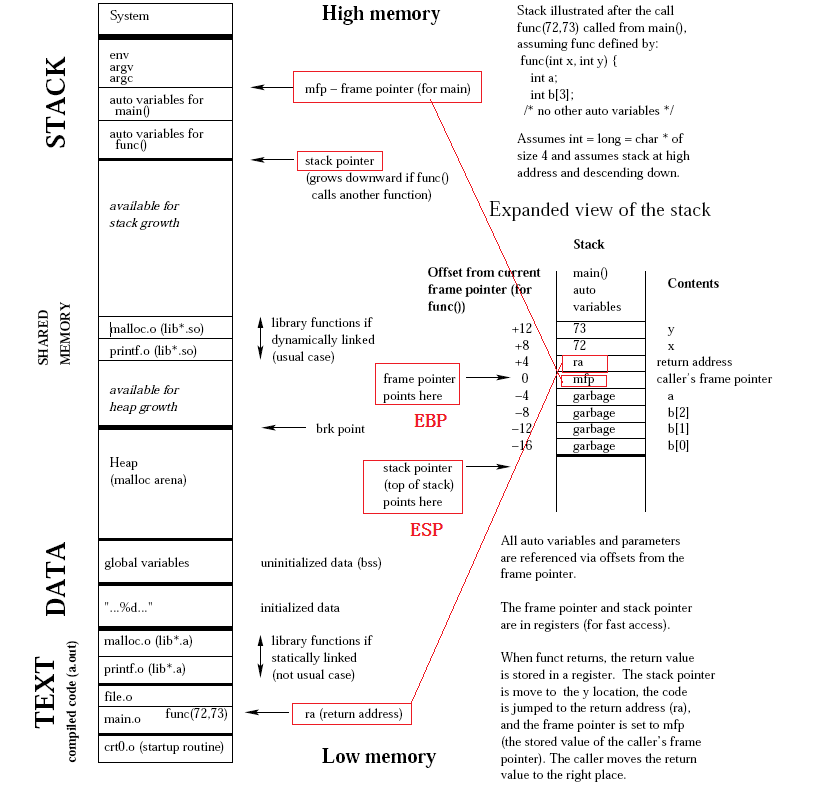在chinaunix论坛上有人问到关于变量存府类型的问题,我觉得可以写个测试代码加深大家对内存使用和布局的理解。下面我把原问题及处理办法贴出来,限供大家参考。
原问题:
static void testB (char *src) { /* 判断传入的src 是属于 @1/2/3 ??? */ do_somthing (); } static void testA (char *src) { char *a = "hello world"; char b[100] = "hello world"; testB (a); /* @1 */ testB (b); /* @2 */ testB ("hello world" ); /* @3 */ }
@1 有名常量
@2 缓冲资源
@3 未名常量
怎么用宏去区别啊???
下面是对这个问题的处理办法:
编译器和语言并没有直观的提供什么功能去实现这个处理,可以换个思路,在C中有四个存储类型static,automatic,register,dynamic。每种类型的存储的地址都是可识别的,通过对存储地址的判断可以识别实事的变量或常量变型。
char *a = "hello world";testB (a); 和 testB ("hello world"
); 这两个调用实际上是一样的。编译器在处理的时候会把对hello
world的变引指向相同的地方(编译器基本都这么进行优化处理,不属于标准规定)。根据上述说法那下面的公式成立:编译器对常量变量的内存处理策略+操
作系统的内存布局=可明确定位的内存识别。由于操作系统的内存布局因系统而定,编译器的实现也各有不同,所以就算得出结论要实现相关处理的代码也是很难进
行移植的。下面是完成相关功能的代码在linux下测试通过。
#include <stdlib.h> #include <stdio.h> #include <string.h> int global_dummy = 0; static void testB (char *src) { /* 判断传入的src 是属于 @1/2/3/4*/ int local_dummy = 0; if( (unsigned long)src < (unsigned long )&local_dummy ){ //if( src > testB ){ if( (unsigned long )src < (unsigned long )&global_dummy ){ printf("string literal "); } else if ( (unsigned long ) src > (unsigned long ) &global_dummy){ printf("malloc string "); } //} } else { printf("array: stack "); } } static void testA () { char *a = "hello world"; char b[100] = "hello world"; char *c = malloc(100); strcpy(c,a); printf("char *a = "hello world"; "); testB (a); /* @1 */ printf("char b[100] = "hello world"; "); testB (b); /* @2 */ printf(" ("hello world" ) "); testB ("hello world" ); /* @3 */ printf("char *c = malloc(100); "); testB (c ); /* @4 */ free(c); } int main(int argc,const char** argv) { testA(); return 0; }
程序的运行结果如下:
char *a = "hello world";
string literal
char b[100] = "hello world";
array: stack
("hello world" )
string literal
char *c = malloc(100);
malloc string
虽然没有处理和测试所有情况,但以述代码我觉得针对理解内存布局和变量使用问题已经足够了。
下面贴个linux下程序运行的内存布局图,可以加深对上述代码的理解

ps:这不是抄袭,是原创